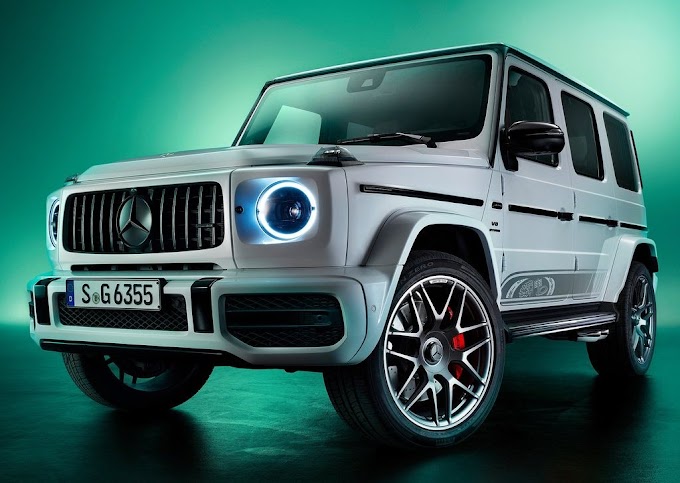The year 2025 has brought forth a Ferrari unlike any before it one that exists purely in the digital realm. Unveiled not on the asphalt of a racetrack, but on the blockchain as an exclusive NFT for members of the Hyperclub program, the 2025 Ferrari F76 Concept is a 'design manifesto' that challenges the very definition of a hypercar. Paying tribute to the 76th anniversary of Ferrari's first Le Mans victory in 1949, the F76 is more than just a virtual collector’s item; it’s a radical exploration of future design language, unburdened by the physical constraints of road-going production.
Design: Unshackled Aerodynamic Artistry
The most striking aspect of the F76 is its audacious, uncompromising design, born from the innovative minds at the Ferrari Styling Centre led by Flavio Manzoni. It is a fusion of biomimicry, architectural principles, and generative design, resulting in a shape where form, function, and virtual performance are intrinsically linked.
The centerpiece is the double fuselage design. The car’s body is split into two distinct pods for the driver and passenger, aligning the cabins directly with the wheels. This separation allows for an unprecedented central channel that runs through the car’s core, effectively turning the entire body into a sophisticated wing that maximizes ground effect. This radical aerodynamic solution showcases a relentless pursuit of purity in airflow management, a principle that could heavily influence future physical Ferrari hypercars.
Detailing the design are numerous futuristic touches that simultaneously hint at Ferrari’s heritage. The front is dominated by a suspended band that hosts slim, retracting headlights—a stylistic nod to the pop-up lamps of 1970s and '80s Ferraris. This band extends the floating splitter concept to the extreme. The rear is equally dramatic, with the split tails giving way to a large, exposed diffuser. The iconic four taillights are synergistically integrated into a sleek upper wing that defines the central channel, creating a conceptual "portal" to this new design language.
In essence, the F76 is a vehicle of pure thought, utilizing topology optimization to integrate cooling flows directly into the virtual structure a method that creates complex, organic geometries for maximum heat dissipation, something only truly possible when divorced from material limits. It's a breathtaking, aggressive, and highly technical aesthetic that redefines the ultra-exclusive segment.
The Digital Cockpit: A Shared, Synced Experience
Stepping (virtually) inside the F76 reveals an equally revolutionary concept: a shared driving experience enabled by drive-by-wire technology. The dual cockpit design features two sets of synchronized controls steering wheel, accelerator, and brake pedals—for both the driver and the passenger.
This is a profound departure from traditional hypercar philosophy. Instead of being a purely driver-centric machine, the F76 is engineered to let both occupants experience the full, unfiltered sensation of driving in real-time. This dual-control setup, only feasible in a drive-by-wire system, elevates the emotional and technical connection between the occupants, creating a communal thrill. The interior, though designed using innovative, generative geometries, is centered on functionality and the seamless integration of technology to enhance the shared moment.
Performance: A Digital Spec Sheet
As a digital-only concept and NFT, the F76’s performance specifications are not bound by physical engine displacement, emissions standards, or material strength. Instead, the "powertrain" is left to the owner's discretion or virtual implementation, a reflection of the limitless potential of the digital realm.
However, the design itself serves as the ultimate performance statement. The aggressive ground effect, the radical aerodynamic management of the double fuselage, and the generative design principles all point to a theoretical peak performance that would shatter existing world records.
Ferrari’s description of the F76 as a parametric creation where form, function, and performance merge suggests an absolute aerodynamic efficiency. While official virtual performance numbers (like 0-100 km/h or top speed) remain speculative or are tailored by the NFT owner’s chosen digital powertrain (ranging from a classic V12 to a hybrid V6), the visual engineering manifest in the F76 is one of maximum downforce and minimal drag. It represents the theoretical maximum of what a racing machine could be.
The Future of Ferrari
The F76 Concept, as the company’s first digital-only vehicle, is a significant marker for Ferrari. It signifies a brand embracing the future of digital assets and a new, wealthy clientele, while also serving a crucial role as a design manifesto.
While some purists may lament its non-physical nature, the F76 offers the Ferrari Styling Centre a blank canvas a place to test and showcase extreme ideas that might be too radical or expensive for immediate physical production. Elements like the double fuselage, the advanced integration of cooling, and the use of generative design are likely to trickle down into the marque's road-going hypercars of the future, much like the technical advances of their Formula 1 and WEC programs.
In conclusion, the 2025 Ferrari F76 Concept is a polarizing but utterly necessary step for Maranello. It is a stunning, technologically advanced piece of digital art that honors a rich racing past while boldly looking to a future where engineering and aesthetics are defined by code and imagination. It’s the ultimate statement of intent: Ferrari is not just leading the physical automotive world, but staking its claim in the limitless landscape of the digital frontier.






![2025 Audi S6 Sportback e-tron [US] - The Electric Evolution of the Sport Sedan](https://blogger.googleusercontent.com/img/b/R29vZ2xl/AVvXsEgiE3fyojKejHaxBijLmjw2MvTyXkw8p5dIwLaR-m3n5JLQ7f0UQfP84kH6bJ4vifoAASiLh7Lvv5OQkfT8XEp34iHiaMwOBA6hrwprzhg1cmvtW5DFnVGEy_LJS0LUjbBrpwupY6JU3a_Kxpupd0EHUYvFCoPEpv43xEzsfbN0jvSmNaL_kPfzMXB2_A-a/w680/2025%20Audi%20S6%20Sportback%20e-tron%20%5BUS%5D_01.jpg)



![The Electric Evolution 2026 Mercedes-Benz CLA [UK]](https://blogger.googleusercontent.com/img/b/R29vZ2xl/AVvXsEjGkU44BS_XwKzdFIaBpvuqrFD3zr0jUKtWeaITNiMFLK1jaaDU1pxq9PQ_nlWzkt9QqpFIHdjJVRAa_hXER7DTZ6-t6AW4shKp3jtCuWlRQ7vE680pbJ60r-PPG6G91xTdiSG6SjufxcOi6eQ8joariV6DwISnmaObcpEFzqepLpctw3aPu3lQQXCGndDa/w680/2026%20Mercedes-Benz%20CLA%20%5BUK%5D_01.jpg)












0 Comments